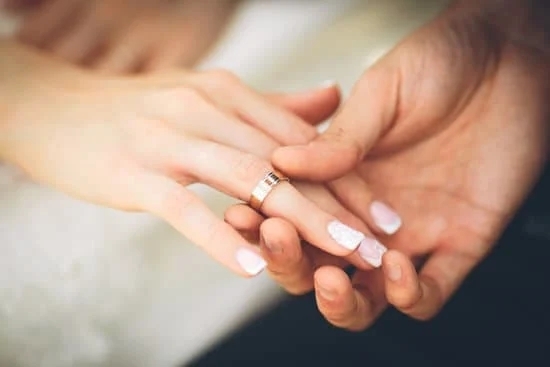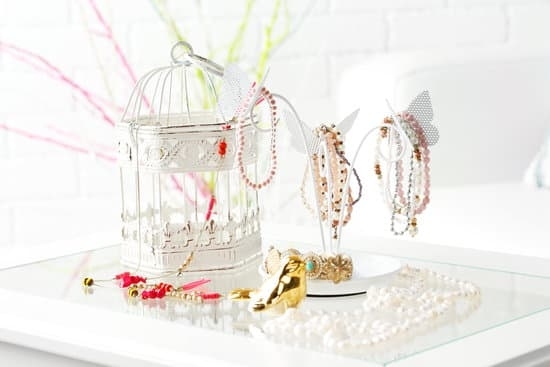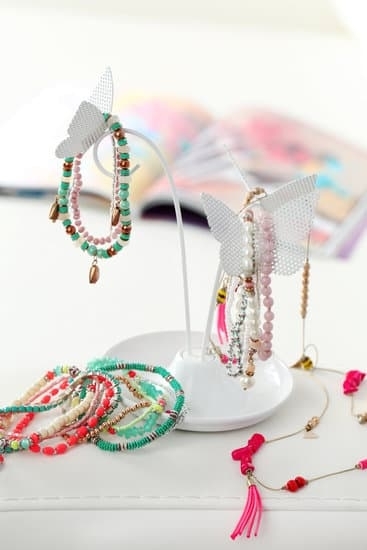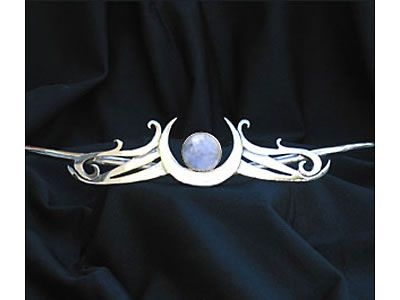Victorian jewelry was popular during the Victorian Era and spanned from the years of 1837 to 1901. Women of this time period were fascinated with jewelry which often reflected their financial situation. Jewelry was also a token of love or sentiment that was given as a gift, reflecting the affection between loved ones.
Materials and Appearance
The most popular materials used for Victorian jewelry were gold, sterling silver, colored glass and paste glass stones instead of diamonds. Some women had access to more expensive jewels than others, so you may find a range in the quality of material used in each item. Designs featured intricate filigree work, multi-layered colorings, the incorporation of natural elements such as plants and animals, and symbols of power like crowns or crosses.
Price and Status
Incorporation into Life
Materials Used
Jewelry from the Victorian period was made primarily of precious metals such as gold and silver, with occasional use of steel. Some forms of jewelry also incorporated natural materials like semi-precious stones like turquoise, coral, jade, pearls, garnets and other gemstones. Metals in particular were often used in combination to create intricate patterns and designs that would allow light to travel along multiple strands of metal wiring or braided chains.
The styles and the application of settings utilizing gemstones were widely varied amongst jewelers during the time. Copper was also employed in some pieces as a complementary material, primarily in laid down settings with chunky chain links or flat link bracelets.
Women often wore their jewelry as a reflection of their class status. As wealth increased during this era so did the number and types of items they chose to wear on their bodies as adornment – from necklaces, pins and brooches, to bracelets and earrings. Rings remained relatively unchanged throughout this time apart from an increase in availability for portrait miniatures.
More ornate pieces tended to be associated with nobility or those who could afford the richer materials like ivory, enameled gold or diamond encrusted pieces of exquisite craftsmanship. Earrings were emerging as a popular form of adornment at this time often with intricate filigree work or profusions of colored stones set into them creating another layer over outgoing fashion norms and trends.
The Victorians wore their jewelry proudly; it showed through both lavish designs and restrained conventions that women didn’t have to hide away their beauty under frilly petticoat dresses anymore but instead show off what little treasures they owned by starting trends all on their own.
With carefully crafted trinkets made from metals combined with precious gems these Victorian women shone like no other before – it was aspirational for many other members within society regardless if you belonged to a royal court or not.
In almost all cases even low-income classes had access to these styling choices meaning that anyone could elevate themselves versus having completely different rules based upon social classes.
Unique Designs
The setting of precious stones, enamels and intricate engraving became the defining characteristics of Victorian jewelry. Pieces often included meaningful symbols like a lady bird-representing love, or a snake with its tail in its mouth-acting as an eternity symbol.
Other popular motifs included flowers and other natural elements such as animals or masterfully intertwined pieces of ribbon. Gold, silver and occasionally copper were used to create some of these masterpieces with countless small details added to make them truly special.
The Victorians also loved their darker side, sought after Art Nouveau jewelry which was often inspired by Gothic themes including death head motifs like that of the skull & crossbones. These unique designs gained more popularity during Mourning Jewelry mourning period around the 1870s where primarily gold was used as design element to craft pieces like hair pins and lockets.
Hair jewellery in particular was a way for Victorian women to ensure that their memories would live on beyond their passing and necklaces engraved with messages such as “remember me” became widely popular accessories for both daily wear and special occasions alike.
For the final look, Victorian women had the option to choose from an array of stones; from diamonds, rubies, emeralds and sapphires – they could find it all. Most often stones came highlighted in elaborate settings such as halo rings where diamonds surrounded a central gemstone creating an eye popping display on every finger.
Other arrangements included crosses, flowers and owls among many other interesting symbols found throughout this time period. During this era many jewelers across Europe began to customize their own item lines creating particular items which include pendants inspired by monarchies or lost city architecture – offering truly one-of-a-kind decorations complete with fascinating tales behind them.
Social Importance
During the Victorian Era, jewelry was an important accessory for many women. Jewelry was often used to represent a woman’s wealth and social standing, but also as a way to express their individual style and fashion sense. According to historical accounts, prominent women from this era would wear pieces of jewelry that featured precious metals such as gold and silver, as well as brightly colored gems, pearls, and other accents.
These materials often featured engravings with detailed motifs reflecting the level of craftsmanship and wealth held by the wearer. As an example, Queen Victoria herself was known to collect elaborate necklaces featuring diamond insets.
Women of the Victorian Era also found subtle ways to flaunt their status through the type of jewelry they wore. During this time period, fashion trends constituted simpler designs with fewer flourishes; those who could afford more expensive pieces typically opted for intricate detailing or piecework patterns which conveyed their elevated social station. Wealthy women of the Victorian Era were known to wear multiple layers of pearl necklaces as well as several rings on each hand.
Due to its ability to signify wealth and class in such a manner, some have argued that certain pieces of jewelry become “status symbols” during the Victorian Era providing “wealthy” women with tangible evidence of her standing in society.
Although some may claim these particular items were ostentatious displays intended solely for admiration from onlookers, it is undeniable proof that wearing certain types of jewelry could directly indicate one’s place within Christianity-based societies or even denote success within a specific occupation or field during this time period.
Crafting Techniques
The craftsmanship and detail that went into each piece of Victorian jewelry was remarkable. Although a variety of sources provided materials to work with, most jewelers took immense pride in their handcrafted pieces. Jewels such as pearls, rubies, and sapphires were especially sought-after, along with solid gold and high-quality silver.
Intricate details were often an art form in themselves – lace designs were popular motifs, as well as elements of nature, such as florals and feathers. The metals used in the jewelry typically had treatments like texturizing or plating that augmented its quality and overall beauty.
The Victorians also incorporated new methods into their crafting techniques. Tools like piercing saws, chisels, dapping blocks for forming curves and hollowing stones for setting allowed for more creative designs than ever before.
Jewelers experimented with settings beyond the traditional prong or bezel; many adopted the tension setting which suspended gemstones within a frame by squeezing it from all sides rather than using claws to hold them up individually. Beyond this “floaty” illusion created by tension settings, innovations also included incorporating unique colors into metal settings through electroplating (also known as enameling), a process that involved electricity plates being applied over the metal itself.
Finally, one hallmark of Victorian era craftsmanship was its utilization of symbolism within pieces. Symbols such as snakes (notably seen in Victorian snake rings); compasses; stars; hearts; garlands; trees of life; acorns; laurel wreaths; roses, anchors and dragonflies all held very important meanings to individuals during this time period.
Jewelers continued to incorporate these symbols into jewelry until the Edwardian era at which point they began to phase out largely due to Art Nouveau’s widespread influence at the turn-of-the century. Overall whether due to symbolic messages or rare stone type – creating fine pieces had become somewhat of an art form mastered only by the highly skilled jewelry makers of this particular time period in history.
Notable Figures
The Victorian era was a time characterized by glamour and luxury. Victorian era women were no exception. Some of the most well-known figures of this period were synonymous with ornate and exquisite jewelry. Perhaps the two most notable figures of the era were Queen Victoria herself, and her daughter Princess Alexandra.
Queen Victoria was known for wearing a variety of precious gems and heirlooms on both formal occasions as well as in her day-to-day outfits. Often, she would pair jewels from her sets or from her husband Prince Albert’s past commissions with items she had designed specially for herself. Her prized jewel set included some stunning sapphires that adorned a four strand diamond necklace and pearl tiara along with matching earrings, necklace enhancesd with diamonds and more.
Princess Alexandra’s style was equally sophisticated. She preferred to add subtle touches of sparkle to her ensembles rather than large pieces of statement jewelry. Before the turn of the 20th century, she famously commissioned a Rose-Diamond brooch encased in gold which used stones from various pieces previously belonging to Queen Victoria herself. She also seemed to enjoy opal jewelry, often sporting rings and necklaces featuring these beloved stones whenever attending public events or simply strolling around town.
In addition to both royal ladies, actresses such as Sarah Bernhardt were also great representativesof this era’s fashion sense when it came to jewelry accessoirizing their wardrobes in both stage performance settings for everyday wear alike. One of Bernhardt’s favorite pieces – an emerald turtle brooch that practically became her signature accessory – made its appearance on many posters promoting her performances all over Paris at the time.
Finishing Touches
Victorian Jewelry was an iconic era for women’s fashion, and the jewelry was adorned with a variety of final touches that gave it an even more timeless statement. Many pieces were hand-crafted from fine metals, such as gold and silver, which gave them a delicate and feminine look. Delicate stones such as turquoise and amethyst were set in intricate settings to make the finished design even more stunning.
Intricate knotted patterns were used to outline beads while twisted metal designs adorn brooches. Furthermore, lab-created gemstones were crafted into beautiful earrings, lockets or pendants with detailed filigree settings or hand-engraved mountings to bring out the unique characteristics of each stone.
The Victorian era saw its fair share of symbolism as well, and this is reflected in some of the subtle touches added to finished pieces. From Etruscan Revival jewelry that incorporated ancient stylings to referencing zodiac signs or Freemasonic insignias, each completed piece had its own series of symbolic flourish designed to tell a story.
Furthermore, two-tone gold creations were also popular during this period where yellow gold was paired with rose gold – further highlighting important symbols or personalizing messages on certain pieces.
Finally, making a piece truly “Victorian” involved taking it into new unexpected areas such as designing naturalistic motifs or emblems like feathers or roses – signifying renewal and celebration. Detailing reproduced insects symbolized regeneration of life while floral designs expressed femininity and beauty beyond measure – all expertly crafted into fine one-of-a-kind jewels that would last lifetime.
These little extra flourishes provided an expressive finish that made these pieces truly timeless works of art that can still be appreciated today by future generations.
Historical Pieces
The Victorian era saw a great deal of innovation that left us with some incredible and iconic jewelry pieces. Some of the most significant and recognizable examples were the diamond halo engagement rings.
This popular Victorian trend was inspired by Queen Victoria herself after she received her own diamond halo engagement ring from Prince Albert when they became engaged. The double-ringed halo was composed of a lightweight central stone surrounded by sparkling diamonds arranged in a vintage design; these designs are still used today as they remain timeless pieces cherished for generations.
Another key example of Victorian influence is mourning jewelry. When wearing this sad but beautiful jewelry, one could be reminded of the sorrowful occasions suffered by those we have lost, while at the same time adorn themselves without going against traditional etiquette; many variations evolved with more intricate engravings to suit the preferences of their bereaved owners.
These items were often in the form of rich black onyx chokers and necklaces, mixed with flowers such as violets to represent sorrow and entombed hair to symbolize mourning for a lost loved one.
Last but not least were tiaras or coronet tiara headpieces – these exquisite pieces had become hugely popular during this period, especially among high society women who would use them as an expression of their status and wealth. Such magnificent headpieces could be seen adorned with delicately crafted leaves, intricately shaped crystals or gemstones and hundreds of dazzling seed pearls set amidst gold bullion wirework all designed to create breathtaking crowns or tiaras fit for members of the royal family.
Conclusion
Victorian-era jewelry is perhaps one of the most influential and enduring trends of all time. In the 19th century, women around the world were heavily influenced by Queen Victoria’s style, resulting in a slew of stylish, fashionable, and often intricate pieces being produced.
Whether it was jewelry made from precious stones such as diamonds, gold, silver or even semi-precious materials such as coral, glass beads and mother-of-pearl tools; there was an abundance of creativity that defined jewelry from this era. Women embraced these new designs as a status symbol – signifying their wealth and social class.
The impact of Victorian-era jewelry is still felt today in modern society. These exquisite pieces embody elegance and professionalism, which can be found in countless bridal accessories the world over.
For example, sparkling diamond necklaces are often favored by modern brides while elaborate gold earrings acquired during the Victorian era are always part of an heirloom collection or worn to make a bold statement on special occasions. Beyond just bridal jewellery though, Victorian pieces can be seen in everyday fashion as well – think unique bracelet cuffs and large hoop earrings that were fashionable among these ladies back then.
Vintage Victorian-era jewelry still exists today and can be sourced through antique dealers or reputable online retailers who specialize in vintage items. With the help of experienced professionals, you can find stunning pieces to add to your collection at a fraction of the cost compared with purchasing newly made items. These pieces offer insight into our past culture and heritage – providing us with wonderful memories that last for generations to come.

Welcome to my jewelry blog! My name is Sarah and I am the owner of this blog.
I love making jewelry and sharing my creations with others.
So whether you’re someone who loves wearing jewelry yourself or simply enjoys learning about it, be sure to check out my blog for insightful posts on everything related to this exciting topic!





